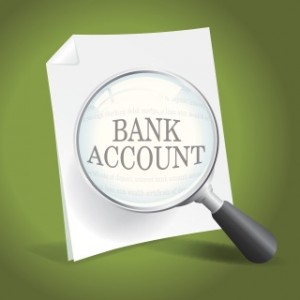Banking in the US is just like any other industry: crowded. The sheer number of options available can catch even the best prepared international students off guard. Fortunately, we are here to help clear up the confusion and explain some common accounts available at most banks throughout the country. In fact, it is easier than it appears: though there are many different types of bank accounts available at most commercial banks, the kind of banking the average college student needs to do can be accomplished using just two of them.
1) Checking Account
A checking account, as the name suggests, is a bank account that is used to write checks, pay bills, or otherwise withdraw money from a bank. In this way, the account serves means of storing (and then accessing) money in order to spend it on purchases, bills, and other obligations. That means you can not only pay for products and services with a checking account (and the checks the accompany it) but also use the account to easily transfer money from one bank to another. Some checking accounts also provide debit cards that allow account holders to make withdrawals ATMs as well.
2) Savings Account
A savings account, by contrast, is not as flexible as a checking account. Because it is used primarily meant to be used as a means of storing money for the long term, it is not designed to give account holders easy to access to their money “on the go”. In fact, though some banks allow account holders to access their savings accounts through ATMs, most do not allow their clients to access their money with checks. That is important because so many common transactions – be they mundane ones like paying your tuition or thrilling ones like booking a hotel for that weekend trip to Las Vegas – cannot be completed using cash.
As you can see, then, it is very difficult to pay bills with just a savings account. Nevertheless, because these accounts generally bear interest, it may make sense to open a savings account alongside a checking account if you have a large amount of money on hand. In any case, be sure to carefully consider the different options – and fees – associated with each account before you formally open a bank account in the US. After all, you want your first step to financial success in the US to be a good one!






Hello
What can I do, because I’m out of country and I want to open bank account. What can I do please
The financial aid office at your school should be able to advise on bank accounts suitable for international students.
I am in nigeria can i open usa account
Hi there,
Thank you for considering InternationalStudentLoan.com for your educational financing needs. Whether you’re an international student aiming to study in the U.S. or Canada, or a U.S. citizen planning to study abroad, we are dedicated to assisting you through the entire loan process. You can start by exploring our Loan Search Tool on our website to easily find the right lenders for your institution. It’s important to understand each lender’s specific requirements, which can be reviewed on their websites or by contacting them directly: https://www.internationalstudentloan.com/apply/
If your institution isn’t currently listed, you don’t have to worry, there are still possibilities. We encourage you to contact lenders directly to inquire about potential options or upcoming inclusions of your school. Additionally, don’t forget to explore other financial support like scholarships and grants, which are invaluable resources.